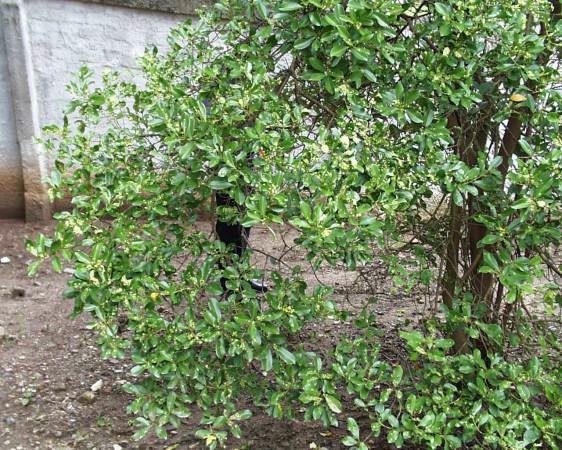
Lloyd Loope
Last month I began to present my point of view as a conservation scientist relevant to current “controversy” over biocontrol of strawberry guava (Psidium cattleianum), Hawaii’s most damaging invasive plant species. I touched upon the generally accepted theory that many highly invasive plant species, held in check by insects and pathogens in their home range, become unbeatable competitors in their introduced range where those insects and pathogens are lacking. Strawberry guava exemplifies the “enemy release” theory; it is attacked by virtually no insects or pathogens wherever it invades on many tropical islands of the world.
Though I’ve always supported the concept of biocontrol as a potential tool for Hawaii’s most widespread and most invasive plants, I recall a personal pessimism in the 1980s that biocontrol success might be unlikely in this case because guava is in the myrtle family (same as Hawaii’s ‘ōhi‘a) and commercially important common guava (Psidium guajava) is such a closely related sister species.

A strawberry guava tree in Curtiba, Brazil is heavily infested with the galls of the scale insect Tectococcus ovatus. This is the typical effect of the insect on the plant. It was a result of a naturally developing infestation of the insect in the plant’s native range. U.S. Forest Service photo
But state and federal natural resource agencies in Hawaii have managed to cobble together a remarkably stellar program to address the rampant invader. In 1991, the National Park Service and the University of Hawaii began to collaborate with the Federal University in Curitiba, Brazil, to identify and evaluate potential biocontrol agents. After 10 years of field observations and other testing working within the native ranges of both strawberry guava and common guava in Brazil researchers found 133 insect species in 12 orders and 80 families that fed on strawberry guava. Thirty-one of those species fed only on plants in the myrtle family, and five species fed only on strawberry guava and not at all on common guava. The collaborative program zeroed in on Tectococcus ovatus, a scale insect that feeds on the new growth, creating galls on the leaves of strawberry guava. This scale insect was the choice for more intensive work based on the relative severity of damage inflicted on P. cattleianum and the ease of handling it.
Tectococcus ovatus was brought to containment facilities in Hawaii and Florida, where strawberry guava is also invasive, for intensive experimental testing to ensure its safety as a biocontrol agent. Many related native and non-native plants were tested as potential host species. Strawberry guava is the only plant in Hawaii that this insect is able to feed on. Dr. Tracy Johnson of the U.S. Forest Service in Hilo has brought the program close to fruition over the past eight years.
The insect reduces the plant’s energy and nutrients available for growth and reproduction. Heavy infestation is expected to accelerate leaf drop and reduce fruit and seed production. Some fruit will be produced and the plants are not expected to die. If the scale insect thrives, it will level the playing field between the invasive strawberry guava and native forest species.
What other species in the ecosystem will be affected by the expected decline in strawberry guava fruit production? Feral pigs and a few species of non-native birds will lose a seasonal carbohydrate diet supplement during the September-December fruiting season. These same species are fully able to thrive in areas where there is no strawberry guava.
Hawaii is confronted by intractable invasive species problems, but by integrating prevention, early detection, rapid response, and biocontrol we can begin to address these problems. Biocontrol is an essential part of invasive plant management strategies in New Zealand, Australia, and the U.S. mainland. Florida has become a leader in biocontrol in the past decade. For example I recently learned that thanks to two insects introduced about 10 years ago as classical biocontrol agents, the notorious Melaleuca, or paper bark tree is no longer invasive in the Florida Everglades! My scientific opinion is that biodiversity conservation in Hawaii will not succeed without the enlightened use of biological control.
Lloyd Loope is a research scientist with the U.S. Geological Survey stationed at the Haleakala Field Station. He holds a doctorate in botany from Duke University and is an active Maui Invasive Species Committee member.
Originally published in the Maui News, October 12, 2008 as part of the Kia‘i Moku Column.
You can see all the articles in the Kia‘i Moku series http://www.hear.org/misc/mauinews/





